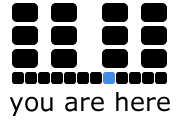Platform
by Jentery, Curtis, Matthew & Jamie
The platform is the vehicle through which a “Standards in the Making” (SITM) approach materializes. Here, we speak of the various code-work, software and hardware configurations, discursive environments and rhetorical situations that make possible data about data in the new work of composing. Tagging, as one kind of folksonomic system that we analyze, provides a platform upon which future users can find or stumble across web-based artifacts. Jentery points to the tagging platform as enabling serendipity in the perusal of online photo collections like the Flickr Commons, that tags “[circulate] with the image to other domains.” The platform enables, he elaborates, an additional form of knowledge based in distance, following Moretti (2005, p. 1). This distance furthers a “science of reducing those one million books to a single thing.” From this platform, as composed of software and hardware, emerges a set of knowledges that exceed the originary artifacts. Similarly, Curtis argues that the practice of tagging “can be read as a site [of] struggle.” Again, “site” operates here much as a platform, as does the “rhetorical situation” that Jamie discusses. For Curtis, conversation and debate is found within and across the collection of tags themselves. Jamie also considers the tagging system as the space of argumentation and contestation, a social space of discursive formulations, where “tags can be read as evidence of the emerging standards of an unfamiliar, readymade knowledge space.”
The platform, in Matt’s reading of the Flickr Commons, also operates to delimit such discursive formulations. Moving contrary to discussions of building contingency into metadata practices, his critique is that the platform can also be disenabling. He writes, “the machinic language of tags, notes, and comments [in the Flickr Commons] fixes the possibility for treating the artifact situationally”. In this sense, the protocol and the platform is simultaneously about openings and closures, and may move in opposition to contingency, serendipity, and collaboration.
Our SITM approach has left open several questions of platform. What platforms might enable a collective organization of knowledge-making projects? Are there “best” platforms, or merely purposeful, functional platforms? Can the logics of cultural formation move outside of platform? What compositional strategies enable a re-tooling of platforms?
